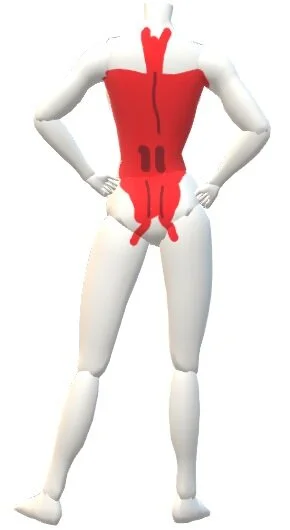Week 4: Side Curl
Side Curl
The Side Curl movement is great for when we have imbalances between the left and right side of the body; this can happen when we have a dominant side (think or instance about your mouse arm and leaning to the right). This practice (especially the leg movement part) works with two muscle groups which are problematic for people in sedentary stressful jobs: the Iliopsoas and the Quadratus Lumborum (QL).
Standing Awareness
We start each practice with Standing Awareness; this practice will allow you to feel your posture. You can listen to the audio or just close your eyes and notice what you feel from your feet upwards. It will sound like:
“Stand normally, relax as much as possible, and don't try to have perfect posture. Let your arms hang by your sides, and close your eyes. Do a very slow internal scan of your body, focusing completely on your internal sensations. Start with your feet, and spend at least 5-10 seconds noticing how each part of your body feels as your scan moves upward, ending with your neck and head. Take as long as you want to do this body scan and do not rush it. Take the time to articulate to yourself what you are feeling; for example, “My weight is more on my right foot than my left” or “I feel like my left shoulder is higher than my right.”
GOOD FOR
Scoliosis
Functional leg length discrepancy
Sciatica
Back tightness and pain
Disc problems
Shoulder tightness and pain
Frozen shoulder
Bursitis in the shoulder or hip
Thoracic outlet syndrome
Tennis elbow
Carpal tunnel syndrome
Neck tightness and pain
Hip, knee and ankle pain
Trauma Reflex
ANATOMY
Upper Body Movement:
The upper body portion of the Side Curl is a lateral flexion of the spine.
Erector spinae group
Quadratus lumborum
Internal and external obliques
Intertransversarii
Latissimus dorsi
Leg Movement: hiking of the hip (lateral tilting of the pelvis) and a lateral flexion of the spine.
Quadratus lumborum
Iliopsoas


